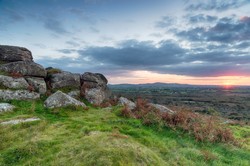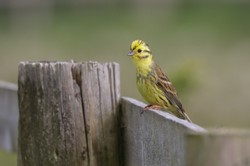The author shows a breadth of knowledge that does him credit, for his work displays a grasp of botany, history and literature.
He delves into the history of each moor, bringing out the various characters, villainous, tragic and otherwise.who have made their story. In some ways what he provides is an insight into social and economic history, revealing incidents that contemporary history books overlook. For example, we talk of the Peterloo massacre in Manchester in 1819, but how many histories speak of the government's sending in the Husssars [cavalry] to defeat miners on Alston Moor in the same year. I am sixty five and have only just heard of it. Perhaps they don't want to reveal that the troops and therefore the government were outwitted by local knowledge and that integral to the outwitting was the role of the miners' wives, who managed to provide their hiding men with so much food that as moorland winter approached the troops were forced to compromise. Peterloo was tragic, but the government won; at Alston Moor it lost. So that's not history, is it?
Atkins presents us with sad characters, such as the wounded soldier who tried to eke a lonely and impoverished life in High Withens, the house upon which Wuthering Heights was based, as he struggled to rescue his wounded mind and body from the horrors of World War One. He tells of rich men with great ambitions to improve the moors and of how the moor defeated them. Their story is blended with that of poor, small farmers who rented the moorland from the rich and tried to grow corn on it, despite its inadequacy for cereal crops. Sadly Atkins does not link this process to the iniquitous corn laws that caused corn to be overpriced, and there is a lack of political background to the stories.
He tells of the founding of Dartmoor prison and the long suffering of the prisoners of war who constructed it, and he visits the modern prison for a service. The tragedy of the place soon becomes evident.
He speaks of the moors in our time,introducing characters who work on them. The gamekeepers are a group seldom addressed in literature, and we are introduced to them and obtain an insight into their minds. Yet we also meet conservationists bent on protecting raptors from game keepers.We meet characters who have retreated to remote moorland life so as to live what is for them an authentic existence. He describes their lives fairly and without romanticizing them.
Where literary connections are pertinent Atkins explores them. Thus much attention is paid to the Brontes at Haworth, and throughout the book he makes copious references to little known works about the moors which he has read. Thus this is a scholarly work,but a readable one.






 TheThousand Year Gardenon 11/26/2025
TheThousand Year Gardenon 11/26/2025
 Women of the Gospelson 10/11/2025
Women of the Gospelson 10/11/2025
 Religious Gardenson 08/25/2025
Religious Gardenson 08/25/2025
 Doctor of the Church: John Henry Newmanon 08/03/2025
Doctor of the Church: John Henry Newmanon 08/03/2025




Comments
Put the remains into landfill.
Thank you for your comment below in answer to my previous, same-day observation and question.
That comment gives hope for bog slides going onto good ground, for the former's removal and the latter's restoration.
What might one do with, where might one put removed bog slides?
Bogs develop in poor ground, so after a bog slide the ground is unlikely to be improved, it will remain poor ground. If the slide lands on good ground the mess can be cleared and the ground restored.
Thank you for your comment below in answer to my previous, same-day observation and question.
The BBC article associated a specific bog collapse with a landscape- and water body-altering landslide.
Do bogs remain bogs after their collapse or do they resurrect as bogs with human or Mother Nature help?
The collapse does not always affect all the bog at once. The collapse is often a slow procee, so the Brontes were lucky enough to be away from the place where the collapse started.avalanches and bog collapses are similar, though the avalanche is the faster.
Thank you for your comment below in answer to my previous observation and question.
How does one make one's own luck amid or near bog collapse? Does it come down to jumping high or running away fast enough?
Online sources lack any information apart the article Donegal: Peat landslide linked to wind farm raised in Dáil by Conor Macauley for BBC online Nov. 18, 2020. That article perhaps looks at bog collapses as landslides.
So would avalanches and bog collapses and landslides be similar?
They were lucky. Simple as that.
Thank you for your comment below in answer to my previous observation and question.
The first paragraph to the third subheading, Scientific background, alerts us to the bog collapse that "could have killed all the Bronte sisters, who were out on the moor when it happened."
What did the Bronte sisters do to save themselves?
Assess where you are and then find a suitable path that takes you on the optimal route off the moor. If you need to seek shelter find the best available, and do not try to descend in darkness.
Your comment below on Oct. 27, 2015, catches my attention, especially where you consider that "Sometimes, in bad weather conditions, the bogs can be grim. The bogs of Dartmoor, Exmoor and Bodmin Moor are particularly dangerous, so if you ever get to go to these places, beautiful in their immense solitude that they are, stick to the paths, please!"
What does one do if bad weather descends?
Does one retrace one's steps?
Does one seek shelter at the path's end?
Does one seek shelter nearest the path?